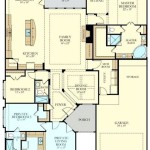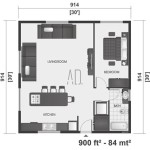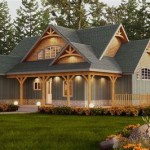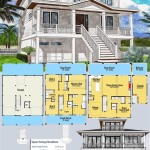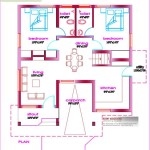Container Home Floor Plans: Designing for Four Bedrooms
Container homes are gaining popularity as a sustainable and cost-effective alternative to traditional housing. The inherent modularity of shipping containers lends itself to innovative architectural designs, offering flexibility in layout and construction. One increasingly sought-after design is the four-bedroom container home, which provides ample space for families while retaining the aesthetic appeal and environmental advantages of container construction.
Designing a four-bedroom container home requires careful consideration of space optimization, structural integrity, and compliance with local building codes. The limited width of a standard shipping container (approximately 8 feet internally) necessitates strategic arrangements and potentially the combination of multiple containers to achieve the desired floor space. Understanding the common configurations and design principles is crucial for anyone considering this type of dwelling.
Key Considerations for Designing Four-Bedroom Container Homes
Several factors influence the design and functionality of a four-bedroom container home. Addressing these aspects early in the planning phase is crucial for a successful project.
One fundamental aspect is determining the number of containers required. A single 40-foot container offers approximately 320 square feet of usable space. To accommodate four bedrooms, living areas, a kitchen, and bathrooms, multiple containers will typically be needed. The arrangement of these containers, whether side-by-side, stacked, or a combination thereof, significantly impacts the floor plan and overall design aesthetic.
Internal circulation is another critical element. Hallways consume valuable square footage, so designing efficient pathways is essential. Open-plan living areas can minimize wasted space and enhance the sense of spaciousness. Thoughtful placement of doors and openings is critical for natural light and ventilation.
Structural modifications must also be addressed. While shipping containers are inherently strong, modifications such as cutting openings for doors and windows can compromise their structural integrity. Reinforcement using steel framing or other appropriate materials is often necessary to ensure the home's stability and adherence to building codes. Consulting with a structural engineer is paramount before undertaking any significant modifications.
Finally, insulation is a key factor in creating comfortable and energy-efficient living spaces. Shipping containers are made of steel, which is a poor insulator and prone to temperature fluctuations. Proper insulation, using materials like spray foam, fiberglass, or rigid foam boards, is essential for maintaining a comfortable indoor climate and reducing energy consumption.
Common Floor Plan Configurations for Four-Bedroom Container Homes
Several popular floor plan configurations can be adapted for a four-bedroom container home. These configurations often involve leveraging multiple containers in creative ways.
A common approach involves using four 40-foot containers, arranged in a rectangular or square configuration. Two containers can be placed side-by-side to create a wider footprint for the living area, kitchen, and common spaces. The remaining two containers can then be used for the bedrooms, with two bedrooms in each container. This configuration often includes a hallway connecting the containers, with careful consideration given to the placement of bathrooms and closets to maximize space efficiency.
Another configuration involves stacking containers to create a two-story structure. In this case, two or more containers can be placed on the ground floor to house the living area, kitchen, and potentially one or two bedrooms. The remaining containers are then stacked on top to accommodate the other bedrooms. This approach allows for a smaller footprint and can be particularly useful on smaller lots, but it requires more complex structural engineering and potentially more extensive site preparation.
A modular approach allows for even greater flexibility. By using a combination of 20-foot and 40-foot containers, designers can create unique layouts tailored to specific needs. For instance, 20-foot containers can be used as individual bedrooms, while 40-foot containers can be combined to create larger living spaces. The arrangement of these modules can be adjusted to fit the site and create a custom design.
Regardless of the configuration chosen, careful consideration must be given to the placement of windows and doors to maximize natural light and ventilation. Skylights can also be incorporated to bring additional light into the interior spaces. Cross-ventilation is important for maintaining a comfortable indoor climate, especially in warmer climates.
Design Features and Space-Saving Strategies
Maximizing the usable space within a four-bedroom container home requires incorporating design features and space-saving strategies. These strategies are essential for creating comfortable and functional living spaces despite the inherent constraints of container dimensions.
One effective strategy is to utilize open-plan living areas. Combining the living room, dining area, and kitchen into a single open space creates a sense of spaciousness and allows for better circulation. This approach also facilitates natural light penetration and enhances social interaction.
Built-in furniture is another excellent way to save space. Incorporating built-in beds, wardrobes, and shelving units eliminates the need for bulky freestanding furniture and maximizes storage capacity. Built-in features can be customized to fit the specific dimensions of the container, optimizing every available inch of space.
Multi-functional furniture is also a valuable asset. Sofa beds, fold-down tables, and storage ottomans can serve multiple purposes, reducing the need for separate pieces of furniture. This is particularly useful in smaller bedrooms or living areas where space is limited.
Vertical storage solutions are essential for maximizing storage capacity. Tall cabinets, shelving units that reach the ceiling, and loft beds can utilize vertical space effectively. These solutions help to keep clutter at bay and create a more organized living environment.
Light and color choices can also impact the perception of space. Light-colored walls and ceilings can make a room feel larger and more airy. Mirrors can also be used strategically to reflect light and create the illusion of greater space. Natural light is another important factor. Larger windows and skylights can flood the interior with natural light, making the space feel more open and inviting.
Outdoor spaces can also extend the living area. Decks, patios, and balconies can provide additional space for relaxation, dining, and entertaining. These outdoor areas can be integrated seamlessly with the interior spaces through sliding glass doors or large windows. This creates a connection to the outdoors and enhances the overall living experience.
In addition to these design features, careful attention should be given to the layout of the bathrooms and kitchen. Compact fixtures and appliances can help to save space in these areas. Using a galley-style kitchen, for example, can maximize counter space and storage capacity. Wall-mounted toilets and sinks can also help to free up floor space in the bathrooms.
Ultimately, the key to designing a successful four-bedroom container home is to think creatively and prioritize functionality. While the constraints of container dimensions can present challenges, they also offer opportunities for innovative design solutions. By carefully considering the needs of the occupants and incorporating space-saving strategies, it is possible to create a comfortable and stylish living space within a container home.
It is important to consult with architects, engineers, and contractors experienced in container home construction to ensure the project is both structurally sound and aesthetically pleasing. These professionals can provide valuable guidance on design, permitting, and construction techniques. Understanding local building codes and regulations is also crucial for a successful project.

4 Bedroom 3 Bath Container Home 120 Keppel Concept House Plans Blueprints Usa Feet Inches Metric Sizes

Container Home Floor Plans 4 Bedroom Homes Be House

4 Bedroom Plus Office Study Plan Container House Plans Building A Home

Container Home House Plans Cargo Best Ing 4 Bedroom 3x40 Foot Containers

Containers Homes Astounding Container Home Floor Plans Bedroom Contain House

4 Bedroom Container Home Floor Plans 8 Designs For Large Families

4 Bedroom Container Home Floor Plans 8 Designs For Large Families

4 Bedroom Container Homes Floor Plans For Large Families

Container House Plans Floor

Design Your Own Container Home Start Now Premier Box

